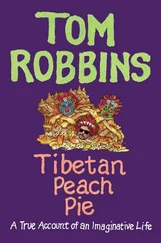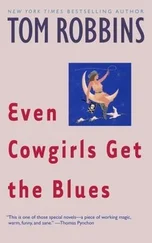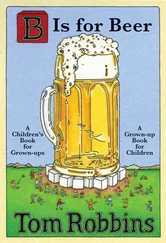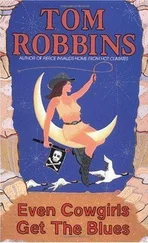Well, the best thing I ever put in my mouth — no, let me rephrase that — the best food item I ever put in my mouth was the foie gras mousse with brown morel sauce that came my lucky way during an alarmingly extravagant lunch at L’Ambroisie, a perennial contender for the heavyweight restaurant championship of Paris. In second place, I’d rank the lamb’s tongue vinaigrette at Babbo in New York.
Let me say right here that after having occasionally viewed with suspicion if not disgust those rubbery, grayish-pink, papillae-puckered puds that lie like beached dolphin fetuses in the refrigerated cases of certain butcher shops, I long ago vowed that my lips would never admit entrance to any lingual organ that was not securely anchored inside the oral cavity of a living human female. Yes, but those were beef tongues on display in the shops, and the lamb’s tongue vinaigrette was chef Mario Batali’s signature dish. How could I be taken seriously by Mario, that jumbo jinn of gastronomy, if I refused to at least sample his favored creation? Now, I’m here to report that in color and texture, lamb’s tongue resembles cow’s tongue little more than it resembles wagon tongue. Tastewise, the dish proved to be heaven without an asterisk, and I’ve been wowed by it each of the half-dozen times I’ve dined at Babbo. But I digress.
Writing about asparagus, as I did briefly in Fierce Invalids Home From Hot Climates, was a breeze because I could expound poetically yet accurately on the shape and color of the vegetable, as well as its singularly bloomless place in the otherwise florid lily family. I wisely refrained from so much as mentioning the taste of asparagus, because it is virtually impossible to talk about the flavor of one thing without comparing it to the flavor of something else — which is why we’re all doomed to hear the cliché “Try it, it tastes like chicken” a thousand times before we die. And with complex dishes such as the two cited above, any lengthy discussion of form and hue would be irrelevant.
So, I’ve never written about lamb’s tongue vinaigrette (layered with mushrooms and topped with a poached egg) or foie gras mousse in brown morel sauce, nor do I intend to do so; and as for requesting one or both of those delicacies for my final repast, let’s be serious: the prison warden does not exist who is sympathetic— let alone sophisticated — enough to send off to Paris or Manhattan for lamb’s tongue vinaigrette or foie gras mousse in brown morel sauce in order that some condemned rat fink criminal might be catapulted into the Beyond with a purring palate and an ecstatic smile.
No problem. It’s no problem because were I planning my death-row menu, neither of the aforementioned haute-cuisine items, as unforgettably toothsome as I know them to be, would sit at the top of my wish list, and they’d be excluded even if money and logistics were no object, and even if I didn’t feel guilty about the poor goose and the lamb. The truth is, the food I’d actually prefer for my terminal treat is something more downhome and ordinary — although as last meals go, not entirely traditional. (According to surveys, the exit entrée most often requested by condemned convicts is fried shrimp, which isn’t necessarily a terrible choice, except that any shrimp fry available within 30 miles of a maximum-security prison, with the exception of seaside San Quentin, is likely to consist of cocoons of greasy batter swaddling thin, pale, bland crustaceans so long frozen they haven’t been near an ocean since Jacques Cousteau was in high school.)
Now I’m an Appalachian boy who grew up on grits and turnip greens, but who, spurred by irrepressible curiosity and a Cancerian stomach rather than any ambitious yearning for upward mobility, later developed an appreciation of fine foods. Certain fare from my childhood still appeals to me, however, and I assure you nostalgia has little or nothing to do with it. Most honest epicures will concede that there exist relatively simple dishes that throughout their lives have banged the oral gong with such proficiency, that have provided such unfailingly consistent pleasure and satisfaction, that, in the end (the literal end), those beloved dishes must be picked ahead of seductive offerings from the celebrated kitchens of Bernard Pacaud or Mario Batali. And that is precisely why I would direct the warden’s flunky to fetch to my cell the following items:
A. Salt and pepper.
B. A fresh, squishy loaf of Wonder Bread. (It’s rare that I remember a major corporation in my prayers, but lately I’ve been calling on God to assist the Continental Baking Company in emerging from Chapter 11, worried as I am that that cheery wrapper, with its ebullient red, yellow, and blue balloons, might disappear forever from grocery shelves. Sure, great little bakeries abound [think European earth mother], producing breads chewy, aromatic, dense, and nutritious, but when it comes to the construction of particular sandwiches — tuna-and-kimchee, for example, or crispy Spam — Wonder Bread [think trailer park cheerleader] is indispensable. Who cares if it builds strong bodies twelve ways, eighteen ways, or no way at all? As a support platform — so pliable, so absorbent, so uncomplicated, so sensual, so ready —for our most soulful spreads and fillings, Wonder is a natural unnatural wonder.)
C. Two ripe red tomatoes. (Depending on the season and the location of my hypothetical incarceration, this could be a problem. It was with great expectations that I recently attended the Palmetto Tomato Festival near Bradenton, Florida, only to discover that every single tomato on display there was green enough to be mistaken for the Incredible Hulk’s left testicle. It’s become a national taboo to allow tomatoes to ripen in the fields, and when you see a sign in your supermarket advertising “vine ripe tomatoes,” you know you’re looking at a lie so blatant it would make the Pentagon blush. To be worthy of its name, a tomato must mature slowly and fully during a very hot, very humid summer. Moreover, as with wine grapes and cigar tobacco, the soil must be chemically perfect. Thanks to global warming, temperatures in the Pacific Northwest are higher these Augusts, yet local tomatoes, even when permitted to ripen in the garden, continue to taste like wet Kleenex; and those grown in hothouses bear the same relationship to an outdoor tomato from Hanover County, Virginia, or truck-farm New Jersey that canned sardines bear to freshly caught salmon. I can only hope that, upon learning of my imminent execution, Good Samaritans in Colorado will be moved to ship me a plump love apple from their backyard patch — and should they happen to be friendly with Hunter S. Thompson, perhaps persuade him to inject it with a little something beforehand. Hunter will know just what I mean, and, trust me, it won’t affect the taste of the tomato.) *1
D. A knife. (Okay, they probably aren’t going to let a knife into my death cell: I might accidentally nick myself or else threaten the priest who’s come to console me with the spiritual equivalent of “vine ripe tomato” ads. I’ll have to cajole a jailer into doing the slicing in his office.)
E. A jar of Best Foods mayonnaise. (Whether it was invented by the personal chef of Duc de Richelieu, or by a gaggle of nymphs entertaining hungry satyrs in an alpine glade, mayonnaise’s origins are definitely French, and for that I bow thrice each and every morning in the direction of the Eiffel Tower. My refrigerator contains at present two jars of mayo purchased in France. It also holds jars, squeeze bottles, or tubes of mayonnaise from Spain, Mexico, Germany, Norway, and Poland. There are eight varieties from Japan, including cheese-flavored, corn-flavored, wasabi-flavored, and, the best, Kewpie brand regular. The Japanese have become so smitten with the Western condiment — its texture as silky as a kimono, its tang as understated as the tang of Zen — that today they have a word for a mayonnaise junkie: mayora . Order a Domino’s pizza in urban Nippon and it will automatically arrive with a mayonnaise topping. You gotta love it! Maybe I should start bowing toward the Tokyo Tower. That notwithstanding, the greatest mayonnaise in the world happens to be… America’s own Best Foods [or Hellmann’s, as it’s called east of the Rockies], a claim repeatedly verified in the blind tastings that mayora friends and I stage in my kitchen every July. There’s nothing the least chauvinistic about it, either: we’re capable of pinning a blue ribbon on Al Qaeda mayonnaise if it could cut the mustard. The bottom line is, any halfway evolved human being is going to demand that Best Foods be served at his or her last supper, and those insipid prisoners who’d just as soon eat Miracle Whip probably are deserving of their fate. Pardon refused!)
Читать дальше












